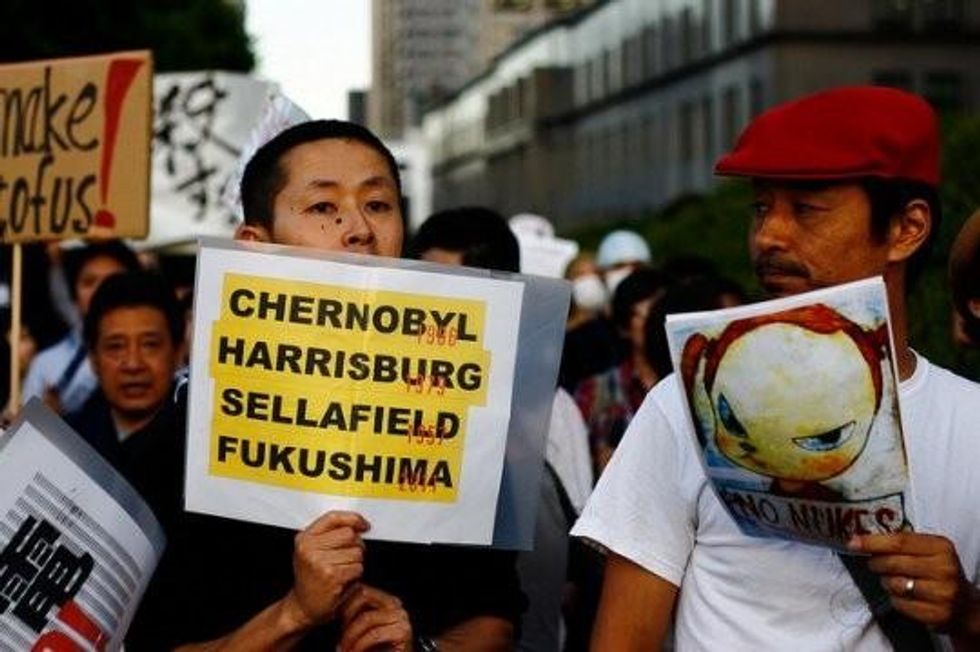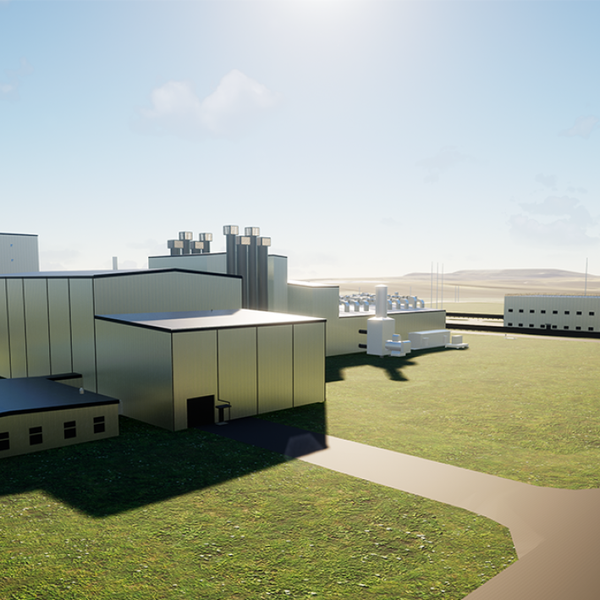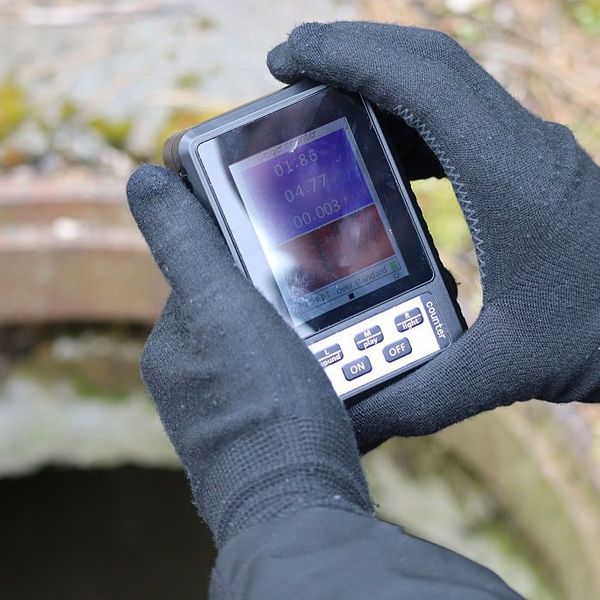Nuclear Expert: Fukushima Is 'Emergency Without End'
Arjun Makhijani: Radioactive strontium being released is 'likely to be a seaside nightmare for decades.'

Arjun Makhijani, President of the Institute for Energy and Environmental Research (IEER), sounds particular alarm around radioactive strontium that is being released from the trouble-stricken plant:
Fukushima continues to be an emergency without end - vast amounts of radioactivity, including strontium-90 in the groundwater, evidence of leaks into the sea, the prospect of contaminated seafood. Strontium-90, being a calcium analog, bioaccumulates in the food chain. It is likely to be a seaside nightmare for decades.
Speaking with PBS Newshour this week, the Carbon-Free and Nuclear-Free author said that strontium is "much more dangerous" than the cesium 137 and 134 being released from Fukushima, and was found "at levels that are 30 times more than cesium." He continued:
So to give you an idea of the level of contamination, if somebody drank that water for a year, they would almost certainly get cancer. So it's very contaminated.
So that's one problem. The other is the defenses to hold back this water from the sea seem to be overcome. So now the contaminated waters, 70,000, 80,000 gallons is flowing into the sea every day.

Well, when it goes into the sea, of course, some of it will disperse and dilute. Some of it goes into the sediment and some of it is taken up by the life in the sea.
And the unfortunate thing about strontium especially is that it bioaccumulates in algae, it bioaccumulates in fish. It targets the bone, because it's like calcium. And so this is a problem. We don't have measurements far out to sea. The Woods Hole Institute has done some surveys. And they were surprised by how much continuing radioactivity they found, but no clear explanation yet.
But it's not just fish that will take in the radiation.
When Living on Earth asked Makhijani about how the radioactivity could affect human health, he said:
Well, the strontium-90 and the cesium would both be perilous, and since the strontium-90 is more mobile and also more dangerous biologically, strontium behaves like calcium, so it goes to the bone. It also bioaccumulates in the base of the food chain and algae. Ultimately because it does bioaccumulate and there is quite a lot of strontium, you could have a large part of the food chain near Fukushima being contaminated.
If pregnant women eat the contaminated fish or drink the contaminated water, he said
the outcomes could be worse than cancer because then you're talking about a much more compromised child in the sense of having a compromised immune system - it makes you more vulnerable to all kinds of diseases.
Just how TEPCO or other authorities will be able to deal with this "radioactivity that's essentially forever" is uncertain, he continued.
It's very, very unclear to me how they are going to be able to get at this molten fuel, extract it from the bottoms of these highly damaged buildings and package it for safer or less dangerous storage or disposal.
"This is an accident that's shockingly not stopping," he warned.
There is one certainty among the many unknowns, writes long-time anti-nuke activist Harvey Wasserman:
[W]hat we now know all too well at Fukushima is that the world's worst atomic catastrophe is very far from over.
The only thing predictable is that worse news will come.
And when it does, our increasingly fragile planet will be further irradiated, at immeasurable cost to us all.
* * *
Watch the PBS Newshour discussion between Makhijani, Kenji Kushida of Stanford University and host Jeffrey Brown below:
Watch Fukushima Reinforces Worst Fears for Japanese on PBS. See more from PBS NewsHour.
_______________________
An Urgent Message From Our Co-Founder
Dear Common Dreams reader, The U.S. is on a fast track to authoritarianism like nothing I've ever seen. Meanwhile, corporate news outlets are utterly capitulating to Trump, twisting their coverage to avoid drawing his ire while lining up to stuff cash in his pockets. That's why I believe that Common Dreams is doing the best and most consequential reporting that we've ever done. Our small but mighty team is a progressive reporting powerhouse, covering the news every day that the corporate media never will. Our mission has always been simple: To inform. To inspire. And to ignite change for the common good. Now here's the key piece that I want all our readers to understand: None of this would be possible without your financial support. That's not just some fundraising cliche. It's the absolute and literal truth. We don't accept corporate advertising and never will. We don't have a paywall because we don't think people should be blocked from critical news based on their ability to pay. Everything we do is funded by the donations of readers like you. Will you donate now to help power the nonprofit, independent reporting of Common Dreams? Thank you for being a vital member of our community. Together, we can keep independent journalism alive when it’s needed most. - Craig Brown, Co-founder |

Arjun Makhijani, President of the Institute for Energy and Environmental Research (IEER), sounds particular alarm around radioactive strontium that is being released from the trouble-stricken plant:
Fukushima continues to be an emergency without end - vast amounts of radioactivity, including strontium-90 in the groundwater, evidence of leaks into the sea, the prospect of contaminated seafood. Strontium-90, being a calcium analog, bioaccumulates in the food chain. It is likely to be a seaside nightmare for decades.
Speaking with PBS Newshour this week, the Carbon-Free and Nuclear-Free author said that strontium is "much more dangerous" than the cesium 137 and 134 being released from Fukushima, and was found "at levels that are 30 times more than cesium." He continued:
So to give you an idea of the level of contamination, if somebody drank that water for a year, they would almost certainly get cancer. So it's very contaminated.
So that's one problem. The other is the defenses to hold back this water from the sea seem to be overcome. So now the contaminated waters, 70,000, 80,000 gallons is flowing into the sea every day.

Well, when it goes into the sea, of course, some of it will disperse and dilute. Some of it goes into the sediment and some of it is taken up by the life in the sea.
And the unfortunate thing about strontium especially is that it bioaccumulates in algae, it bioaccumulates in fish. It targets the bone, because it's like calcium. And so this is a problem. We don't have measurements far out to sea. The Woods Hole Institute has done some surveys. And they were surprised by how much continuing radioactivity they found, but no clear explanation yet.
But it's not just fish that will take in the radiation.
When Living on Earth asked Makhijani about how the radioactivity could affect human health, he said:
Well, the strontium-90 and the cesium would both be perilous, and since the strontium-90 is more mobile and also more dangerous biologically, strontium behaves like calcium, so it goes to the bone. It also bioaccumulates in the base of the food chain and algae. Ultimately because it does bioaccumulate and there is quite a lot of strontium, you could have a large part of the food chain near Fukushima being contaminated.
If pregnant women eat the contaminated fish or drink the contaminated water, he said
the outcomes could be worse than cancer because then you're talking about a much more compromised child in the sense of having a compromised immune system - it makes you more vulnerable to all kinds of diseases.
Just how TEPCO or other authorities will be able to deal with this "radioactivity that's essentially forever" is uncertain, he continued.
It's very, very unclear to me how they are going to be able to get at this molten fuel, extract it from the bottoms of these highly damaged buildings and package it for safer or less dangerous storage or disposal.
"This is an accident that's shockingly not stopping," he warned.
There is one certainty among the many unknowns, writes long-time anti-nuke activist Harvey Wasserman:
[W]hat we now know all too well at Fukushima is that the world's worst atomic catastrophe is very far from over.
The only thing predictable is that worse news will come.
And when it does, our increasingly fragile planet will be further irradiated, at immeasurable cost to us all.
* * *
Watch the PBS Newshour discussion between Makhijani, Kenji Kushida of Stanford University and host Jeffrey Brown below:
Watch Fukushima Reinforces Worst Fears for Japanese on PBS. See more from PBS NewsHour.
_______________________

Arjun Makhijani, President of the Institute for Energy and Environmental Research (IEER), sounds particular alarm around radioactive strontium that is being released from the trouble-stricken plant:
Fukushima continues to be an emergency without end - vast amounts of radioactivity, including strontium-90 in the groundwater, evidence of leaks into the sea, the prospect of contaminated seafood. Strontium-90, being a calcium analog, bioaccumulates in the food chain. It is likely to be a seaside nightmare for decades.
Speaking with PBS Newshour this week, the Carbon-Free and Nuclear-Free author said that strontium is "much more dangerous" than the cesium 137 and 134 being released from Fukushima, and was found "at levels that are 30 times more than cesium." He continued:
So to give you an idea of the level of contamination, if somebody drank that water for a year, they would almost certainly get cancer. So it's very contaminated.
So that's one problem. The other is the defenses to hold back this water from the sea seem to be overcome. So now the contaminated waters, 70,000, 80,000 gallons is flowing into the sea every day.

Well, when it goes into the sea, of course, some of it will disperse and dilute. Some of it goes into the sediment and some of it is taken up by the life in the sea.
And the unfortunate thing about strontium especially is that it bioaccumulates in algae, it bioaccumulates in fish. It targets the bone, because it's like calcium. And so this is a problem. We don't have measurements far out to sea. The Woods Hole Institute has done some surveys. And they were surprised by how much continuing radioactivity they found, but no clear explanation yet.
But it's not just fish that will take in the radiation.
When Living on Earth asked Makhijani about how the radioactivity could affect human health, he said:
Well, the strontium-90 and the cesium would both be perilous, and since the strontium-90 is more mobile and also more dangerous biologically, strontium behaves like calcium, so it goes to the bone. It also bioaccumulates in the base of the food chain and algae. Ultimately because it does bioaccumulate and there is quite a lot of strontium, you could have a large part of the food chain near Fukushima being contaminated.
If pregnant women eat the contaminated fish or drink the contaminated water, he said
the outcomes could be worse than cancer because then you're talking about a much more compromised child in the sense of having a compromised immune system - it makes you more vulnerable to all kinds of diseases.
Just how TEPCO or other authorities will be able to deal with this "radioactivity that's essentially forever" is uncertain, he continued.
It's very, very unclear to me how they are going to be able to get at this molten fuel, extract it from the bottoms of these highly damaged buildings and package it for safer or less dangerous storage or disposal.
"This is an accident that's shockingly not stopping," he warned.
There is one certainty among the many unknowns, writes long-time anti-nuke activist Harvey Wasserman:
[W]hat we now know all too well at Fukushima is that the world's worst atomic catastrophe is very far from over.
The only thing predictable is that worse news will come.
And when it does, our increasingly fragile planet will be further irradiated, at immeasurable cost to us all.
* * *
Watch the PBS Newshour discussion between Makhijani, Kenji Kushida of Stanford University and host Jeffrey Brown below:
Watch Fukushima Reinforces Worst Fears for Japanese on PBS. See more from PBS NewsHour.
_______________________

